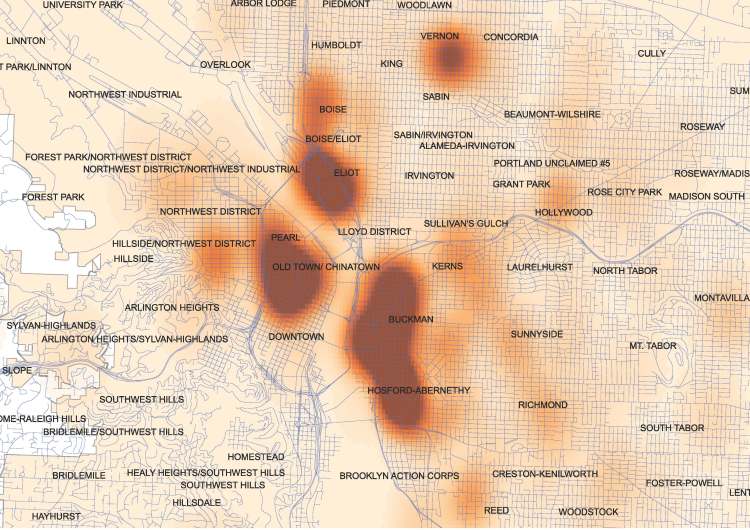Last night we presented the results of the 2015 Portland Made Collective (PMC) survey to an audience at ADX Portland. This year’s survey responses shared a lot of similarities to last year’s survey, although we asked new questions this year that yielded interesting results. Some of the highlights of this year’s survey include:
- Through a series of incentives and weekly reminders, we were able to reach a 25% response rate
- The symmetry between 2014 and 2015’s reports give us confidence that the trends we have identified are real
- These repeated trends include evidence of a “sweet spot” somewhere between the $500,000 and $1 million in revenue where firms experience a hiring spurt of full time workers
- Also for the second year in a row, we saw clustering around two revenue ranges: 26 firms at the $0-20,000 range and 24 firms at the $100,000-500,000 range. The lower range clustering is not surprising, but we would have expected uniform attrition rather than another spike in firms at the $100,000-500,000 range.
Some of the new findings from this year’s report include:
- PMC member firms employed almost 2400 people and generated revenues of almost $320 million
- Revenue growth for PMC members was 37% on average
- PMC members contribute to the local economy: 51% of all materials were reported as sourced locally, and 95% of all final assembly was done locally
Also included in the report (download here) is some mapping that is meant to show the clustering of PMC members and other maker firms around the industrial neighborhoods in the central city. Most interesting is a heat map we put together that shows the intensity of this clustering. For that map, we included over 470 unique data points including maker-style boutiques, makerspaces, suppliers, and other ecosystem resources. Clustering is important for numerous reasons – access to relevant labor pools, suppliers, retail storefronts, and so forth. That map is below:

Lastly, we addressed the problem of affordable space for PMC members on the survey, and as we suspected, over 60% of PMC members see affordable space as a prominent challenge for the future of their firms. Breaking the responses down by revenue category revealed uniform concern across revenue ranges; in other words, regardless of revenue, all PMC members are concerned with their future ability to mitigate the rising cost of manufacturing space in Portland.
